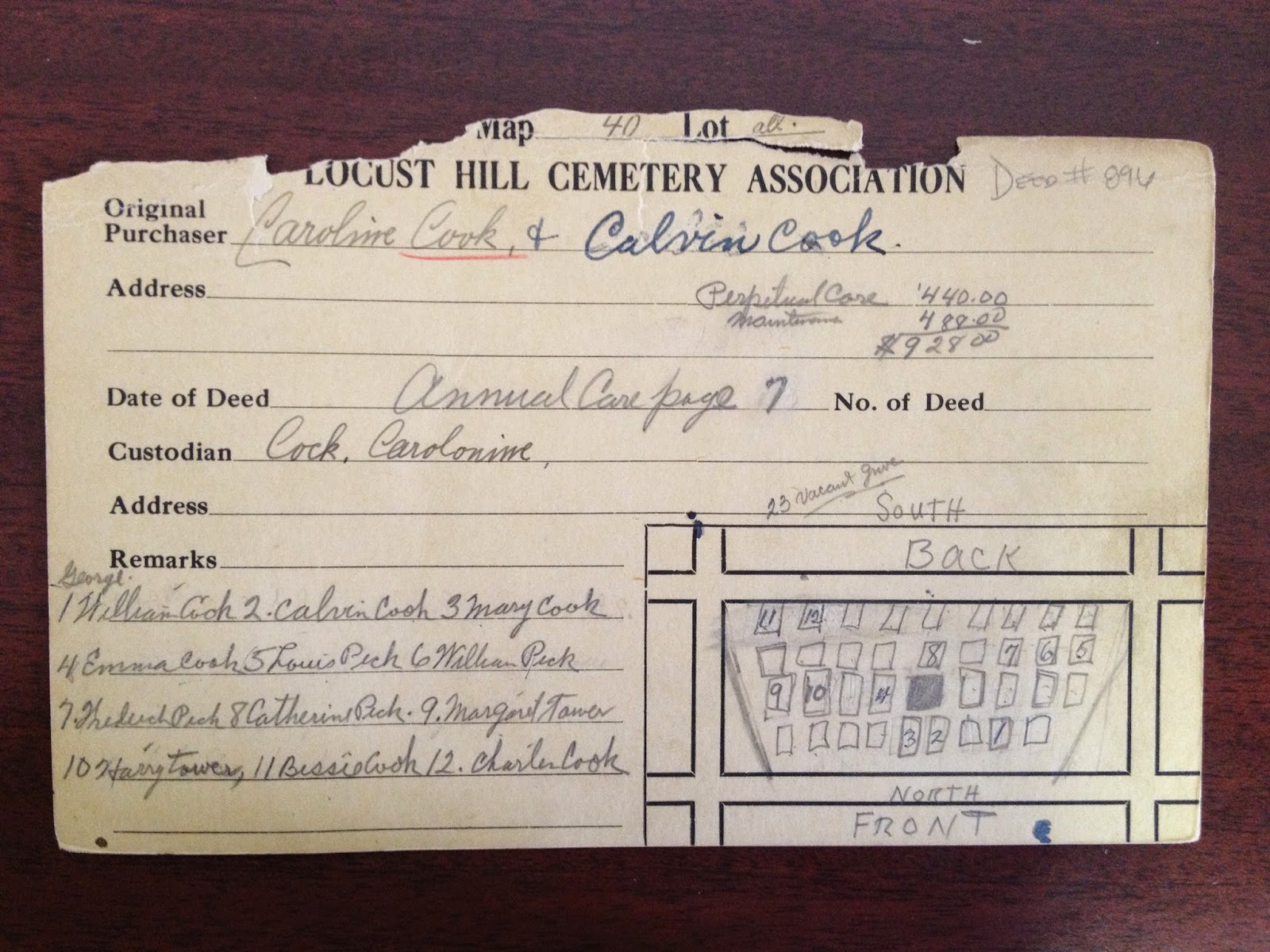I have been creating memorials for over eleven years. Most memorials I create are not for my family; instead, they are random selections from a cemetery I was in, with the hope that someone could use the information.
A few times each week, I am contacted by someone regarding a memorial I created. The correspondence centers around a few themes:
- The inquirer is unable to visit the grave of a loved one in person. By creating an online memorial, especially with a picture of the grave, the inquirer is able to virtually visit the grave.
- The memorial provided the missing link in someone's family history research.
- The inquirer requests that the memorial be amended with different and/or additional information.
If you personally knew someone, you have knowledge of many facts that will not appear on the gravestone but can appear on the memorial page. For example, the memorial for my grandmother, Beulah Cook Lutter (1921-2003), created by my aunt, contains many details that are personally known to her, but will not appear on the gravestone. She doesn't even have a gravestone yet.
An online memorial page of someone's life serves a beautiful purpose and will naturally include sentiments and goes beyond a simple recording of the stone.
This is different from the other purpose of Find A Grave: recording information found on gravestones. If you are documenting a cemetery, you don't personally know the people for whom you are creating memorial pages. You are limited to the information contained on the stone.
If you research the person who has a memorial on Find A Grave, differentiate between the information that is and isn't on the stone. The stone itself is a tertiary source. Think of the gravestone as a stepping stone to help you locate additional records, such as full dates of birth and death, locations, other names used. This information may contradict or enhance the information on the stone.
A gravestone is the only source I have for the death of Mary Neal (1830-1898), widow of Calvin Cook. I have not found a death certificate, obituary, or will for her. She appeared in the 1895 New Jersey census, but not in the 1900 federal census. Finding the gravestone was great, but we need to question its reliability when we don't find supporting documentation.
When viewing a memorial page, you need to compare the information entered by the contributor to the information on the stone. Additional or different information must have arisen from a source other than the gravestone. The contributor should be able to tell you, either in a note on the memorial page or in correspondence, the source of the information not on the stone.
Sourcing is why I handle requests to edit in three ways:
- I check the stone and any notes I may have to ascertain if I made a transcription error and then edit if indicated.
- I offer to transfer the memorial to the inquirer and they may add whatever they wish because their name will appear as the person managing the page. But don't edit the page and then transfer it back to me. We will have a problem with the source of your additional information that I cannot explain to future inquirers.
- I add a note to the page with the additional information and the source, like a disclaimer.
Find A Grave allows you to link parents and spouses, if you are the manager of the page. The links enable people to easily visit the pages of multiple family members and are great for researchers- if the links are accurate.
Someone attached an incorrect spouse to a page I created for a marker at Woodland Cemetery in Newark, New Jersey. The stone is indecipherable except for a first name- Elizabeth. I became aware of this problem when someone questioned why I did not provide a surname for Elizabeth when her spouse and child were known.
The asterisks next to the linked spouse and child indicate that the connection was not made through this memorial page.
Let's hope the contributor who linked the wrong spouse and child to Elizabeth heeds my request to unlink them.
When you use Find A Grave, be mindful of what information is on the stone and what information appeared from nowhere.






























